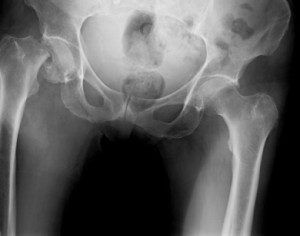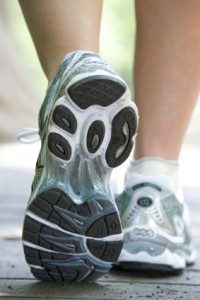One of the most dreaded complications of older age is a broken hip.Patients suffering this injury have a 20% chance of dying in the following year and, among survivors, 25% remain in a nursing home for a year or more.
The Cleveland Clinic website has a two-page article on hip fractures and osteoporosis that mentions a surprising fact: 60% of falls occur in our homes and only 10% in nursing homes or other institutions. If you are 65 or older you have a one third chance of having a fall in any given year. I'm 71 and only a few months younger than my wife so I was quite interested in finding out what we can do to prevent falls and diminish the risk of breaking a hip.
To start with we can single out older women, and particularly Caucasian women as being in the group most likely to have a fall and complications if they do fall. Three fourths of all hip fractures occur in women.That certainly does not leave out us guys or other ethnic groups, but, overall, we're talking about $20 billion being spent each year on the treatment of injuries from and complications of falls. If you start with osteoporosis, as many of elderly women and especially Caucasian do, you are more at risk for a hip fracture if and when you do have a fall.
The CDC article on "Hip Fractures Among Older Adults," says that hip fracture rates in older adults (men over 85 and women over 75) went down significantly between 1990 and 2006 for unknown reasons. Although there were well over a quarter million hospital admission for hip fractures in 2007, there hadn't been the steady increase in that number as had been predicted in 1990.
Why is that? Perhaps it's due to some of the lifestyle and diet changes that some of us have made.
I started with the CDC's recommendations: exercise regularly (we do so, but don't get enough weight-bearing exercise so we'll start walking more), ask your pharmacist and your personal physician to review your medication list (I had to decrease the dose of my blood pressure pill after losing 30 pounds {deliberately} four years ago), see your eye doctor yearly (we do) and make home safety improvements.
They also mention dietary and supplement changes to ensure you get enough calcium and vitamin D plus getting screened for osteoporosis and treated if necessary. We're on top of that one also.
But safety hazards around the home was well worth reviewing. There's been a tangle of garden hoses on our garage floor for the last few months. I just went into that area, picked up one potential fall-inducer, drained it outside and stored it in our backyard shed. I can think of two more areas that have caused one or the other of us to stumble. We kept the big dog bed in our bedroom for nearly three months after our dog died; that's now in the basement. And there's a pile of give-away "stuff" in the garage; it could be re-evaluated and moved on to a new home or at least moved to allow us to leave the car more safely.
AARP in an online article "New Strategies for Preventing Falls," also mentions tai chi as one modality of balance exercise that may help. We took a introductory class, purchased two posters and two books for home use; it's time to start using them.
I'll talk about cataracts in my next post.
Tags: Complications of falls, Falls, Hip fractures, osteoporosis, preventing falls, tai chi


